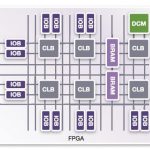You are currently viewing SemiWiki as a guest which gives you limited access to the site. To view blog comments and experience other SemiWiki features you must be a registered member. Registration is fast, simple, and absolutely free so please,
join our community today!
For some marketers the operative mantra is go big or go home. It looks like Apple and Google are both taking a harder look at the automotive industry and have decided to go home.
The media is rife with reports of Apple hemorrhaging automotive engineers while senior executives on Google’s automated driving team have been skipping… Read More
Just returning from Sweden where the highway fatality rate is a marvel of modern transportation policy. Long before Sweden adopted a Vision Zero approach to reducing highway fatalities the country set itself apart from most others with a 0.02 blood alcohol limit for drivers. There is no question that this has contributed significantly… Read More
It’s Labor Day weekend in the U.S. and the National Safety Council (NSC) has forecast that approximately 400 deaths will occur on the nation’s highways. This death toll is about on par with past Labor Day weekends, with no big increase or reduction anticipated.
This routine slaughter is greeted by most observers with a yawn, but … Read More
Almost exactly a year ago I wrote a blog implicating the insurance industry in the high level of highway fatalities in the U.S. As part of that blog (“The Insurance Industry Has Blood on Its Hands”) I suggested that the National Highway Traffic Safety Administration ought to look into developing a fatality-reduction… Read More
Nielsen’s latest AutoTECHCAST study once again introduces confusion to the connected car debate, but it’s understandable and relates to a demographic gradient around technology. Young people are aware of an interested in so-called “brought-in” technologies, while the majority of (older) people… Read More
A report in the Wall Street Journal last week dives into the insurance industry’s quandary over the anticipated onset of self-driving cars that might significantly and negatively impact the volume of claims and, ultimately, mitigate the need for car insurance altogether. The report is simultaneously a source of alarm and relief… Read More
Power. Every device needs it. Managing it properly can make all the difference between a device people enjoy using and one that is more hassle than it is worth. What happens between the battery and the processor is the job of the power management integrated circuit (PMIC).
Why are PMICs gaining so much attention? Increased power … Read More
Designing DRAMs at Intel back in the 1970s I first learned about Soft Errors and the curious effect of higher failure rates of DRAM chips in Denver, Colorado with a higher altitude than Aloha, OR. With the rapid growth of FPGA-based designs in 2016, we are still asking the same questions about the reliability of our chips used for safety-critical… Read More
Designers tend to put tons of energy into pre-silicon verification of SoCs, with millions of dollars on the line if a piece of silicon fails due to a design flaw. Are programmable logic designers, particularly those working with an SoC such as the Xilinx Zynq, flirting with danger by not putting enough effort into verification?… Read More
Poor Dr. Sanjay Gupta, Emmy award-winning chief medical correspondent for CNN, a neurosurgeon and professor and now an explainer of distracted driving as part of CNN’s weeklong report on Driving While Distracted which concluded last Saturday. He offers a detailed medical explanation of driver distraction as only a neurosurgeon… Read More



